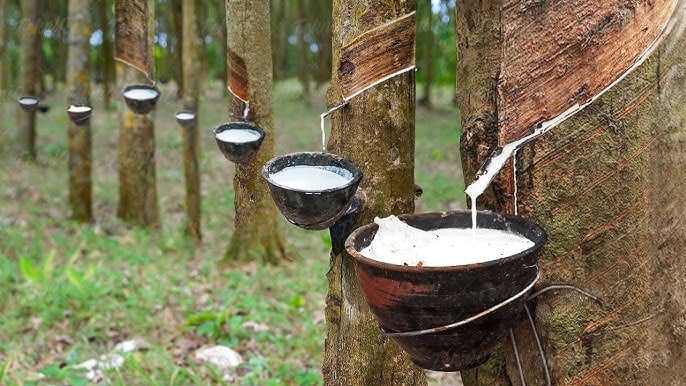How Latex Rubber is made and formed into a mattress
Latex rubber, primarily derived from the sap of Hevea brasiliensis trees, undergoes a fascinating transformation to become the material used in mattresses and various other products. The process begins with tapping the tree, where the bark is carefully cut to release the milky latex fluid. This sap is then collected, filtered to remove impurities, and stabilized with a small amount of ammonia to prevent coagulation.
The latex is then processed through coagulation, where acid is introduced to thicken the material. This thickened latex is rolled into sheets and dried. However, to create latex foam, used in mattresses, a slightly different process is employed. The latex is whipped into a froth, introducing air to achieve a light, foam-like texture. The frothy latex is then poured into a mold shaped like a mattress. These molds are fitted with pins to regulate density and create ventilation holes, which enhance the breathability of the final product.
Once the latex is in the mold, it undergoes vulcanization, where it is heated and baked to solidify its shape and enhance its elasticity. This vulcanization process ensures the latex maintains its durable, elastic properties. After cooling, the latex is removed from the mold, washed to eliminate any residual chemicals or impurities, and thoroughly dried.
The result is a naturally supportive, durable, and breathable latex foam mattress. Due to its inherent elasticity, latex mattresses offer excellent pressure relief and support. They are also eco-friendly and biodegradable, making them a popular choice for consumers looking for sustainable, high-quality bedding options. This intricate process, from sap extraction to vulcanization, showcases the versatility and sustainability of latex as a material for mattresses and other products.

